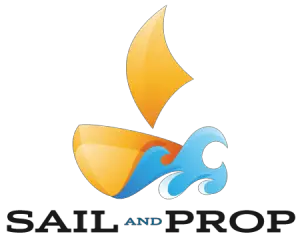I have always been a great fan of windvane self steering systems for long distance boating. There are few pieces of equipment onboard a modern day vessel that perform their task without requiring electricity, diesel or some other source of energy, and yet windvanes handle one of the most important duties onboard – steering the boat – without requiring any energy at all.
In case you aren’t familiar with windvanes, they are a kind of autopilot designed for sailboats that keep the vessel on course based on the angle of the wind relative to the boat. Windvanes were invented in the early 1960’s, and while many improvements and alterations have been made to the original models, they have yet to be replaced entirely by a superior technology. (You can read more about windvanes in general in our full length article – “Windvane Self Steering – A Review”)
I would bet twenty dollars that many sailors a hundred years from now will still use some kind of windvane to handle steering on long distance voyages.
In an age when we seek new innovations to reduce our carbon footprint, it’s more important than ever to use this kind of technology. After all, despite multinational corporations and governments spending billions of dollars to develop low carbon alternatives to our everyday devices – there is still no more environmentally friendly way to travel across the globe than aboard a sailboat – powered by the wind and steered by a windvane.
In order to encourage more people to use this kind of technology, I decided to set a challenge for myself to find the perfect windvane. I was seeking a windvane that could be relied upon to steer a vessel through a near dead calm and through a force twelve hurricane. I wanted a windvane with a minimum of moving parts – a piece of equipment with as few potential breaking points as possible. And I wanted to find a unit that could serve as many purposes as possible, for example a windvane that doubled as emergency steering or that could also connect to an autopilot for use while motoring.
I wasn’t sure if such a piece of equipment existed, but if it did, I wanted to try it out. I decided to find a way to test as many different windvane designs as possible. In order to really get to know how the unit responded to heavy use, I realized that it was essential that the tests would be conducted on a relatively long distance voyage.
I began with the Monitor Windvane on a delivery from the Caribbean side of Mexico, through the Panama Canal and up the Central American coast to Chiapas on the Pacific Coast of Mexico.
The Ultimate Sea Trial Voyage – Cancun to Chiapas
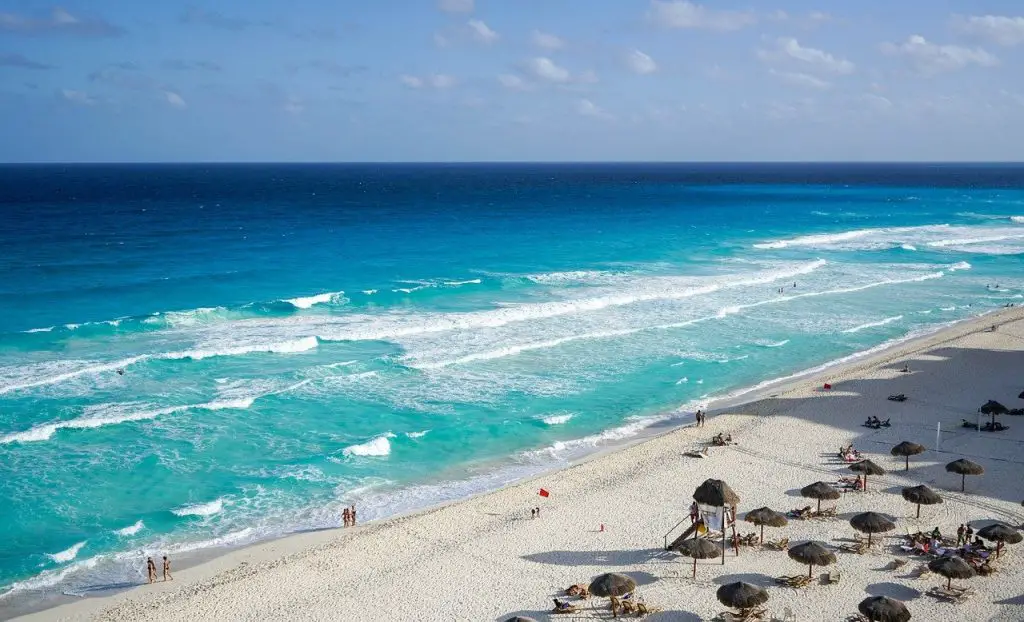
This voyage made for an ideal sea trial for the Monitor windvane for a variety of reasons. The route covered about 2,000 NM (nautical miles) split between the Atlantic (Caribbean) and the Pacific Coast of Central America. Much of the route was upwind, but I knew that we would encounter wind from all directions and of varying strengths throughout the voyage. I departed Cancun in late June, which was during hurricane season, so I knew to expect more temperamental weather than usual and lots of rain and squalls (A kind of short duration “mini storm” that often comes out of nowhere, blasts you with strong winds and heavy rain from any direction, and typically dissipates as fast as it appeared).
Because the tropical storms that affect this part of the Caribbean form in the mid Atlantic, I knew that we would have plenty of warning time to get to a safe port if a hurricane started to move my way. That said, it is never a good idea to make any kind of offshore voyage during hurricane season, and I strongly discourage anyone from doing so. The weather is much nicer during the dry season, anyway.
I knew that this voyage would present a handful of challenges for the Monitor to cope with, so I was confident that I would have a very good understanding of it’s performance by the end of the trip. In order to totally rely on the windvane, I decided to sail solo, and with no backup autopilot. If the windvane failed, I was out of luck. It was to be the ultimate “test drive”!
Monitor Windvanes – An Introduction
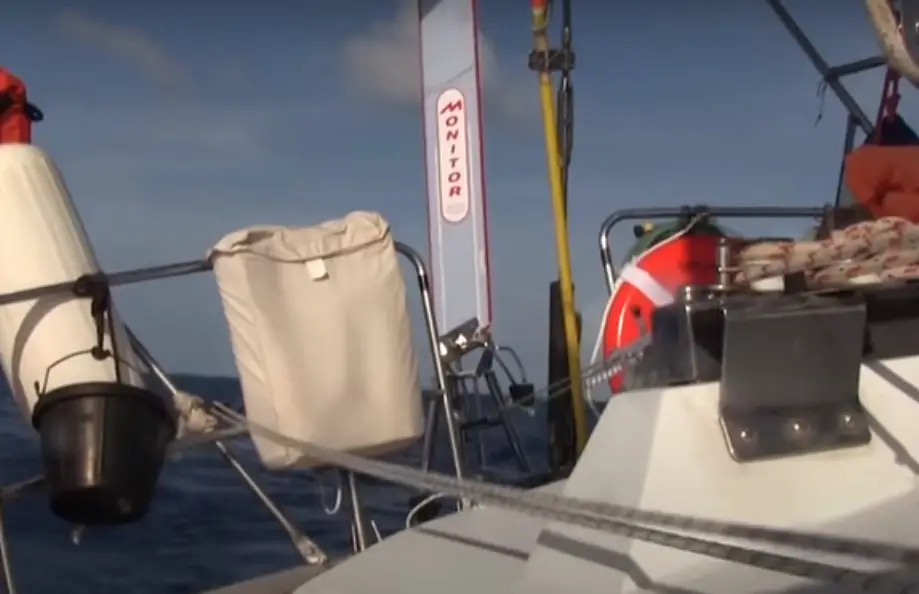
The Monitor windvane is the most popular model of windvane among offshore sailors from North America, and perhaps worldwide. You can find them at almost every marina in the states, and on boats at any large anchorage.
It’s a servo pendulum style windvane, which means that it uses a small paddle in the water to generate the force necessary to turn the helm, and it connects to the boat’s primary rudder to steer the boat. This is opposed to auxiliary rudder style windvanes like the Hydrovane that steer the boat with an independent rudder.
The Monitor is built around a large stainless steel frame which is bolted to the transom of the boat. In this case, the boat I was sailing was equipped with wheel steering, so there was an adapter in the center of the wheel where the lines were fed from the windvane unit. The windvane was equipped with several spare vanes (the small “sail” part of the unit which is feathered into the wind to determine the course), which became important later on in the passage.
This particular unit was built in the late 1990’s, so it was far from a brand new model. It had already had endured many years of use, most recently on a passage from San Francisco to Florida. There was a little bit of rust on some parts of the frame, but overall the unit looked to be in good shape considering it’s age. I tried it out around the harbor before departing, and found it to be in good working condition.
The Monitor’s Performance on the First Leg
The first part of the voyage was hard on the wind all the way from Cancun to Shelter Bay Panama, the Atlantic side of the Panama Canal. Because the Islander 36 I was sailing was pretty good at self steering herself upwind, I knew that the windvane wouldn’t be absolutely necessary on this leg of the journey, but I wanted to see how well the windvane worked to keep us on course on a close haul anyway.
I motored out of Cancun Harbor, and as soon as I was far enough away from land I set the sails and engaged the windvane. It started working right away to keep us on a course in the direction of the Cayman Islands. I made myself a coffee and sat back, enjoying the freedom of sailing under self steering.
The rest of the passage was an uphill battle to keep the boat making way against the wind, but I had no problem relying on the Monitor to steer so long as the wind remained stronger than ten knots. Less than that, and the heavy swell knocked the wind out of the sails, making it near impossible to keep sailing without steering by hand.
One notable incident on this passage was when we were pursued by a suspicious looking vessel off the coast of Honduras. The boat was about forty feet long, overloaded with people, and was unlit despite the fact that the sun was setting at the time. They had no reason to motor towards a small sailing vessel, but they continued to move in my direction, even after I altered course by 90 degrees.
There had been reports of pircay in the area, and I later heard about another solo sailer getting captured and ultimately murdered in this area just a few days before. To get out of the way, I short tacked into the wind over a relatively shallow area, and was able to outmaneuver the strange looking boat until it gave up the chase.
Throughout this incident, the Monitor was invaluable. It made it possible for me to watch the boat through the binoculars, handle the sails, and use the radio while the windvane steered the boat. Without the Monitor, there is a good chance that I would not have been able to maneuver as fast, and we just barely got away by the skin of our teeth.
After we were a safe distance away, I silently thanked Scanmar Marine for helping me escape pirates. Not a bad note on the resume!
Five days later I sailed past the breakwater at Colon and tied up at the Shelter Bay Marina. There had been a couple mechanical breakdowns for other pieces of equipment along the way, but so far I was very impressed with the Monitor’s performance.
Breakdown on the Pacific – The Downside to Windvanes
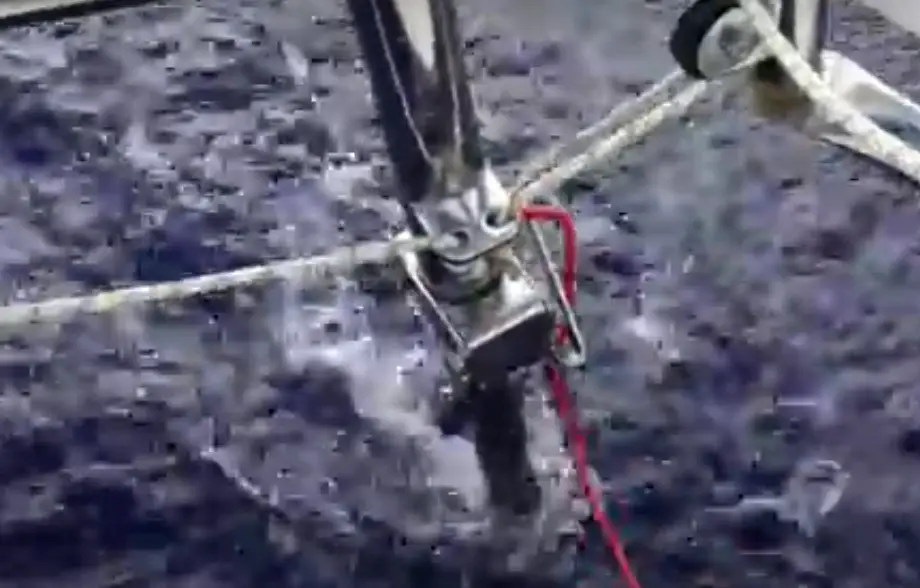
The first part of the voyage was hard on the wind all the way from Cancun, but I knew from previous experience that I could expect much more variable conditions on the Pacific side. Sometimes, you get no wind for days, other times the wind can blow at near hurricane force. This leg of the journey would pass through an area where reinforced trade winds funnel between the volcanoes of Central America and once they hit the Pacific side they can reach near hurricane strength.
This leg of the journey lived up to its reputation, and I faced all types of conditions from dead calm to a full gale right on the nose. Because it was hurricane season, we had thunder and lightning every night. Sometimes the electrical storms got quite close to the boat, but fortunately we never suffered a direct hit.
I split this leg into two sections with a brief stop in Costa Rica to top up the supplies and make repairs to the boat. The first passage to Costa Rica started off with a nice breeze, but it soon died down below five knots and I had to hand steer on and off for the following five days. Then a strong squall came up out of nowhere and disconnected the vane part of the Monitor. There were three spares aboard, which was a good thing because by the time I got to Chiapas all but one had fallen off in various squalls, despite being well secured. I made a tether that connected the last one to the boat so it wouldn’t float off even if it was disconnected, but it held up for the remainder of the trip anyway.
For the next week, the wind alternated between a very light breeze, just barely enough to fill the sails and get the boat to creep along at a slow pace, and sudden, violent squalls which seemed to appear out of nowhere and blast us with gale force winds. At one point, I swear the wind was coming from directly above!
In these conditions, the Monitor was of little help, because as soon as I set the windvane to sail the boat on course, the wind direction would change 180 degrees, and I would have to reset the sails and turn the vane over to the other side.
In between squalls, when the wind was light, the boat’s movement through the water was too slow for the servo pendulum to have enough force to steer the boat properly. I wasn’t surprised, because windvanes aren’t designed to work when the wind is only one knot!
Two days out of Costa Rica, the windvane took a rogue wave on the side, which bent the servo pendulum shaft and knocked the gears which connect it to the vane out of alignment. I brought out my toolkit and worked on the unit for a number of hours, but I was never able to get it properly repaired until I was back in port.
For the remainder of the passage, I was back to hand steering.
The fact that I was forced to finish a windvane sea trail experiment by hand steering was an unfortunate turn of events, but it reminded me how much of a help it had been earlier in the voyage. When you have a windvane taking care of the helm day after day, it’s easy to take it for granted. After four or five days of playing with the sails and spending many long hours at the helm, I would have happily forked over five thousand dollars to have Scanmar Marine magically airdrop a new unit to finish the trip.
Final Thoughts on the Design and Performance
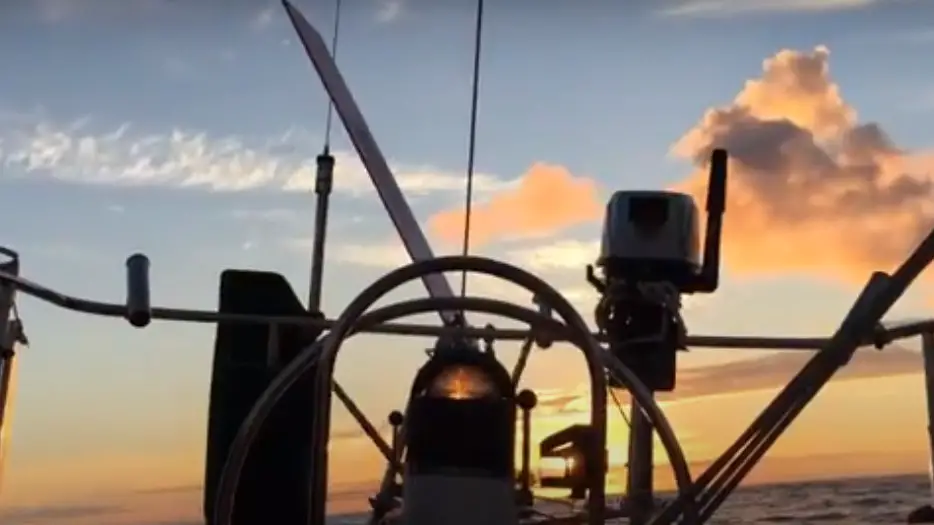
Despite the breakdown on the last leg of the voyage, I was still very happy to have the Monitor aboard for this voyage. For the first three quarters of the journey, it performed as well as I had hoped, and it played a key role in helping us get out of a couple tight spots when I couldn’t have managed the boat without it.
For people considering installing a Monitor on their boat, I would say go ahead, but be sure to carry all the essential tools and spare parts to repair the unit at sea, and shy away from buying an older used model. Over time, the Monitor frame can slowly be distorted by the force of the waves, and it’s more likely to fail over time. I would give an out of the box Monitor windvane an expected lifetime of ten years of serious use. Beyond that, almost any piece of equipment on an oceangoing boat is likely to need to be replaced.
Is a Monitor windvane worth the high price tag? Well, considering the peace of mind and higher quality of life that a windvane unit can give you on a long passage, and knowing how many times an electric autopilot would likely need to be replaced in the same period of time, I would say yes. Even if you have to pay five or eight thousand dollars for a new windvane, having an extra crew member who never gets tired, hungry or seasick is invaluable.
If you enjoyed this article and want to learn more, don’t miss our deep dive into windvane self steering systems and how they work in our previous article “Windvane Self Steering – A Review”.
To compare the Monitor to the classic British Aries model, you can continue this series with our upcoming article “Sea Trialing an Aries Windvane – A Review”. The best way to keep up to date with all our latest content is to subscribe to the SailAndProp.com newsletter, so don’t forget to sign up today! You’ll be glad you did.
